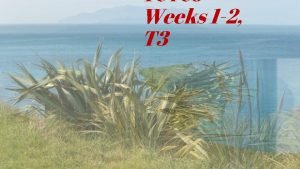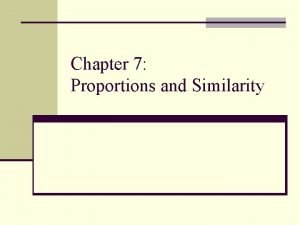Weather and climate extremes Rangi weather and climate









- Slides: 9

Weather and climate extremes Rangi weather and climate curriculum

New Zealand’s climate can be defined as ‘temperate’ meaning we experience mild weather conditions. However, every so often we experience extreme weather and climate events. These events are unusual and don’t happen very often – that’s why we call them ‘extreme’. The other reason we call these events extreme is because they can cause impacts that affect our daily lives, such as heavy rain that causes flooding. These events may happen on a single day, or they may occur over a long period of time – for example droughts often develop when we have many weeks in a row without any rainfall.

Measuring extremes How do we know if it is hot, cold, wet or dry enough to be considered ‘extreme’? For that, we need to have a collection of all historic observations of temperature, rainfall, wind and sunshine. That way, we can compare the temperature we are feeling with all the temperatures that have been recorded in the area and find out how unusual the current temperature is. In New Zealand, we have measurements of our weather and climate going all the way back to 1853 at Albert Park in Auckland. This is a picture of a really old handwritten data sheet from Auckland in 1863!

New Zealand’s highest temperature • 42. 4°C, in Rangiora, Canterbury on 7 February 1973 • Three features allowed temperatures to get so high on this day: • time of year (summer = hot!) • wind direction (northwesterly bringing hot air from Australia) • clear skies with no clouds

New Zealand’s lowest temperature • -25. 6°C, in Ranfurly, Central Otago, on 17 July 1903 • Three features allowed temperatures to get so low on this day: • time of year (winter = cold!) • clear skies so heat could escape • snow on the ground reflecting heat from the surface St Bathans, Central Otago, photographed in July 1903 by F M Pyle. Credit: National Library

It is worth keeping in mind that extreme climate and weather events for New Zealand may not necessarily be considered extreme when compared to other parts of the world. For example, we think that a 40°C day is extreme but, in some places, such as Dubai, 40°C is just another summer day.

New Zealand’s highest annual rainfall • 16, 617 mm, in Cropp River (near Hokitika), for the year 1998 • That’s the height of 8 classroom doors! • This is the amount of rainfall Auckland usually records over 15 years! This photo shows the rain gauge at the Cropp River climate station.

New Zealand’s longest dry spell • From 8 February 1939, Wai-iti (Marlborough) observed 71 days in a row without any rain. • Very long dry spells can cause droughts which have significant impacts for farmers – growing grass and feeding animals. • Droughts can also affect water supplies for cities, like in Auckland in early 2020 This photo shows the Mangatangi reservoir during the drought in May 2020. This reservoir, along with others in the Hunua Ranges, supplies Auckland with drinking water

Kahoot quiz: Weather and climate extremes https: //play. kahoot. it/v 2/? quiz. Id=5 a 26 fde 8 -619 d-4 a 31 -a 771 ef 362 da 2 c 6 ce

















